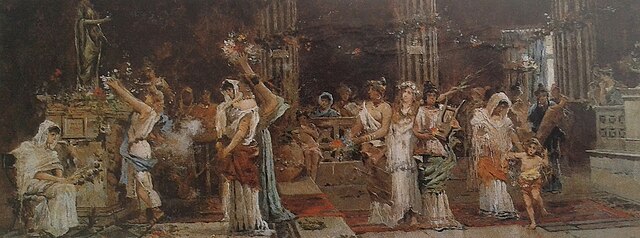A maypole is a tall wooden pole erected as a part of various European folk festivals, around which a maypole dance often takes place.
Dancing around the midsummer pole, in Åmmeberg, Sweden
May Day: villagers southeast of Munich lift a very tall, wooden maypole into place. They competed for height with nearby villages.
Maypole in Bavaria, 1848
Remains of the kukkanja in situ, in which the maypole was inserted
May Day is a European festival of ancient origins marking the beginning of summer, usually celebrated on 1 May, around halfway between the Northern Hemisphere's Spring equinox and June solstice. Festivities may also be held the night before, known as May Eve. Traditions often include gathering wildflowers and green branches, weaving floral garlands, crowning a May Queen, and setting up a Maypole, May Tree or May Bush, around which people dance and sing. Bonfires are also a major part of the festival in some regions. Regional varieties and related traditions include Walpurgis Night in central and northern Europe, the Gaelic festival Beltane, the Welsh festival Calan Mai, and May devotions to the Blessed Virgin Mary. It has also been associated with the ancient Roman festival Floralia.
Maypole dancing at Bishopstone Church, East Sussex, in England, UK in 2006
Floralia by Antonio María Reyna Manescau (1888).
Maypole dancing in the Netherlands, by Pieter Brueghel the Younger (16th century).
Maibaum in Munich, Germany








